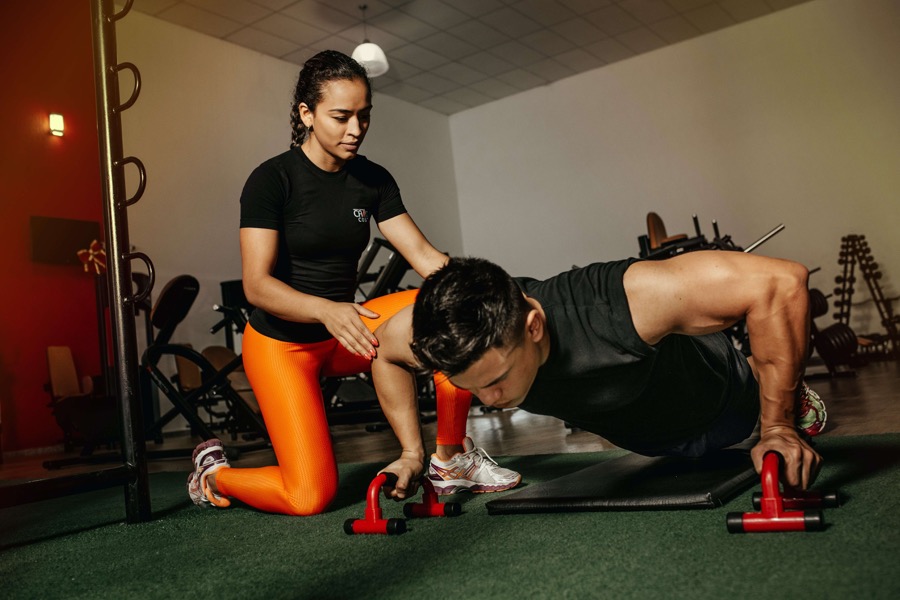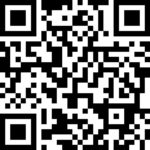Do you aspire to build a name for yourself in the fitness industry? If so, a well-crafted resume can set you apart from your competition and boost your odds of landing your dream job.
A personal trainer resume outlines why someone should hire you, and it gives them a good understanding of who you are, where you come from, and how you can fit into their organization.
To that end, we’ve put together this article to help you craft the perfect resume. We’ll go over the core elements of a personal trainer resume, how to structure everything, helpful tips, and more.
Ready? Let’s dive in.
The Essential Elements of a Personal Trainer Resume
A personal trainer resume should include a professional summary, a list of your core competencies and skills, experience and work history, certifications and degrees (if you have any), and contact information (phone number and email). The resume should be short (one page), concise, and formatted (headings, bullet points, etc.).
Professional Summary
A professional or career summary is a brief introduction at the start of your resume.
The summary should be a quick look at your qualifications, experience, and achievements as a personal trainer. Include any certifications and specialties that set you apart from other applicants.
Here is an example of a professional summary:
“Spirited personal fitness trainer with weight management expertise and the ability to motivate others toward accomplishing weight loss goals. Design classes to match the skill and learning levels of all participants. Skilled in personal program development and individual life and body assessments.”
Source: MyPerfectResume.com
Core Competencies and Skills
The second section in your personal trainer resume should briefly outline (preferably in bullet list form) your skills. Don’t be shy; this is your chance to shine and impress your potential employer.
Potential skills you can list here include:
- Writing tailored fitness programs for clients with special needs
- Helping clients get clear on their fitness goals
- Offering nutritional guidance with an emphasis on core principles
- Being a good role model and helping clients lead healthier lives
- Possessing motivational personality traits
Experience and Work History
Next, we have the section most employers will probably read first: your experience on the job and employment history. Include your experience as a personal trainer––what gyms you’ve worked at, the positions you’ve held, and your duties on the job.
Examples of job duties can include client consultations, providing tailored workout programs, offering guidance, teaching proper technique, and even helping clients with their diet.
Certifications and Education
The bottom of your resume is reserved for your degrees (if you have any) and certifications. Listing these is necessary to give your potential employer a glimpse of your knowledge and skills as a personal trainer.

Include the institution’s name, your degrees (e.g., exercise science), certifications, and when you graduated.
For example:
- Bachelor of Kinesiology, University of Florida (May 2018)
- National Academy of Sports Medicine (NASM) Personal Training Certification (2016)
Contact Information
You must add your contact information to the resume. Do so at the bottom (I’ll share a personal trainer resume example below) or at the top, just below your name and title.
The two mandatory pieces of contact info are your telephone number and email. Adding both is beneficial because you can’t know how your potential employer prefers to communicate.
Some would rather communicate over email, whereas others are old-fashioned and pick up the phone as soon as a resume impresses them.
(It goes without saying but be ready to answer the phone and check your email if you’ve sent your resume somewhere. A quick response from your end makes an excellent first impression.)
Aside from your email and phone number, you can include a link to your LinkedIn page and Twitter, but these are far less important.
Highlighting Your Skills and Past Accomplishments
1. Put Together a Good List of Skills and Abilities
You should spend as much time as necessary listing your skills and previous accomplishments to stand out and boost your chances of getting the job. An example of a mediocre skills list would be along the lines of:
- Client communication
- Goal-setting
- Teaching proper form
- Fitness training
There is nothing wrong with having these skills or abilities, but you must make them more interesting and specific. Otherwise, you risk blending with all the other candidates and never getting the call.
A better skills list would be the following:
- Interpersonal skills: get in my client’s shoes and understand their needs, limitations, frustrations, and limiting beliefs.
- Perform fitness assessments for clients to see what they can (and cannot) do and to track their progress over time.
- Create highly personalized strength training programs that keep my client’s lifestyle, goals, schedule, preferences, and injury history in mind.
- Perform functional movement screening and regularly review my client’s technique to spot errors and provide helpful feedback in real-time.
The goal isn’t to come out sounding arrogant but to clearly and specifically outline your skills. Elaborating on each point is beneficial because it conveys more helpful information and makes you appear more competent.

Consider these two examples:
a) Fitness training
b) I create highly personalized strength training plans that keep my client’s lifestyle, goals, schedule, preferences, and injury history in mind.
Which of the two is more likely to grab the attention of a potential employer? The former is short and simple but doesn’t say much because fitness training could mean a thousand things. In contrast, the latter is far more specific and includes some information on the factors you consider when producing training plans for clients.
2. List Your Previous Accomplishments
One option is to list some of your past accomplishments by blending them with your skills. Here are two examples:
- My first objective is to get in my client’s shoes and understand their needs. Next, I aim to build rapport with each client, which has allowed me to maintain a retention rate above 90% over the years.
- I create highly personalized strength training plans. As a result, my clients routinely hit new PRs, and some have gone on to competeinpowerlifting.
If it applies, you should also list accomplishments related to clients with unique needs. For example, if you’ve worked with severely deconditioned or obese clients in the past and they’ve seen fitness success, why not brag about it a bit? Of course, maintain a professional and respectful tone but don’t be afraid to set yourself apart.
The bottom line is to focus on the outcomes. Potential employers want to know that you can help clients, and they want a glimpse at your skillset and approach.
You can also showcase your unique approach to training and managing your clients. That could mean using a specific training method, leveraging a particular type of training (e.g., HIIT), or using unique teaching tactics.
How (and Why) to Format Your Resume for Success
Have you ever encountered an article consisting of huge blocks of text with little to no formatting? Did you stick around to read the whole thing? Probably not.
Like most people, you clicked back and found a better resource on Google––one that includes headings, short paragraphs, bold text, bullet points, and other formatting elements that make the information far easier to digest.
Well, the same goes for resumes. Managers looking to hire a personal trainer for their gym must look at dozens, if not hundreds, of resumes. The poorly formatted ones are quickly tossed aside simply because they are a huge chore to read.
In contrast, the ones with good formatting that catch the eye immediately are far likelier to be read thoroughly. Here’s a good personal trainer resume example (you can click on the image to see it in full size):
Now, let’s go over some of the design elements and a few tips you should follow to format your resume for success:

1. Use Headings
Headings break up the text and clearly outline what each section covers. That makes it far easier on the eyes and allows the person reading the resume to find what they need quickly.
You can also separate the big sections in the resume with horizontal lines (dividers). See an example of that in the image just above.
2. Use Bullet Points
A bullet point is a symbol and formatting element that allows you to list different things in a clear and organized way for the person reading your text.
They bring clarity and draw attention, making it easier for your potential employer to pick out the essential information.
3. Write Short Sentences and Paragraphs
As discussed above, nobody likes huge blocks of unformatted text. A far better approach is to break up long paragraphs into smaller ones (no more than two to three lines each). Also, keep your sentences short and to the point.
4. Pick the Right Font
A font is the letter style you choose for your writing. Accessible and easy-to-read fonts include:
- Arial
- Calibri
- Montserrat
- Roboto
Avoid fancy fonts that make it difficult for the reader to decipher all the letters. Fonts to avoid include Caveat (Caveat), Comic Sans, and Pacifico (Pacifico).
Are you tired of juggling multiple personal training clients and struggling to keep track of their progress? Look no further than Hevy Coach––the all-in-one personal training platform designed to streamline your coaching practice. With it, you can easily create and share training plans, answer client questions, provide support, and monitor progress, all from a single, easy-to-use dashboard. Sign up for Hevy Coach today and test it for free with one client.
Extra Tips and Tricks for Your Resume
1. Personalize Your Resume for Each Job Application
Writing a professional resume isn’t just about listing all the relevant information and hoping for the best. You must also tailor it to the specific job you’re applying to. List critical skills, experiences, and achievements most relevant to the position.
2. Add Relevant Keywords
These days, adding the right keywords within the text isn’t something only SEO experts should do to rank content on Google. Many companies use applicant tracking systems (ATS) to screen resumes and only read the ones that pass the initial screening process.
You can learn more about using the right keywords here.
3. Highlight Transferable Skills
Writing an impressive professional summary and skills section is easier for a certified personal trainer with years of experience, but what if you’re new to the field and are yet to leave your mark?
In that case, you can list some transferable skills. Even if your previous job was in a different field, you can list some skills that could apply to personal training.
For example, do you have experience with client outreach, communication, and management? Think of how these could apply to personal training.
Create your own personal trainer resume here.
Conclusion
Writing a great personal trainer resume can be challenging. It’s one thing to be good at your job and another to summarize your expertise and experience on a single page in a way that convinces someone to call you for an interview.
However, despite the challenges, you must write the best possible resume, even if it takes a full day. As you can see, there are plenty of ways to set yourself up for success, most of which come down to presenting the information in the best possible way.
Critical information to include in your personal trainer resume includes:
- A professional summary
- Core competencies and skills
- Experience and work history
- Certifications and formal education
- Contact information (email address and phone number)
Follow the best formatting practices with the following:
- Headings
- Bullet points
- Short paragraphs & sentences
The right font (ideally, Arial, Calibri, Montserrat, or Roboto)
Check out Hevy Coach if you already have clients and are looking for a better way to manage and coach them. The all-in-one platform makes it easier to keep track of all clients and communicate with them from a single dashboard.
FAQs
1. What should a personal trainer include in their resume?
A personal trainer should include a professional summary, certifications and degrees, a skills list, and contact information.
2. What to put under skills on a resume for a personal trainer?
Include all the skills that are relevant to the job description. These can include your ability to communicate with clients, perform fitness assessments, keep clients accountable, etc.
3. Should I include a photo on my resume?
Unless the potential employer requests it that way, it’s typically best not to include a photo in your resume.
4. How long should my resume be?
Your resume should ideally be one page long. You might be tempted to make it longer by including more information about yourself, but sometimes less is more. Only list the relevant information clearly and concisely.
5. Can I include testimonials on my resume?
Don’t include testimonials in your resume. Instead, have a separate page on your website or list positive reviews from previous clients on your social media.

